First of two parts
Paris train stations and I have never gotten along.
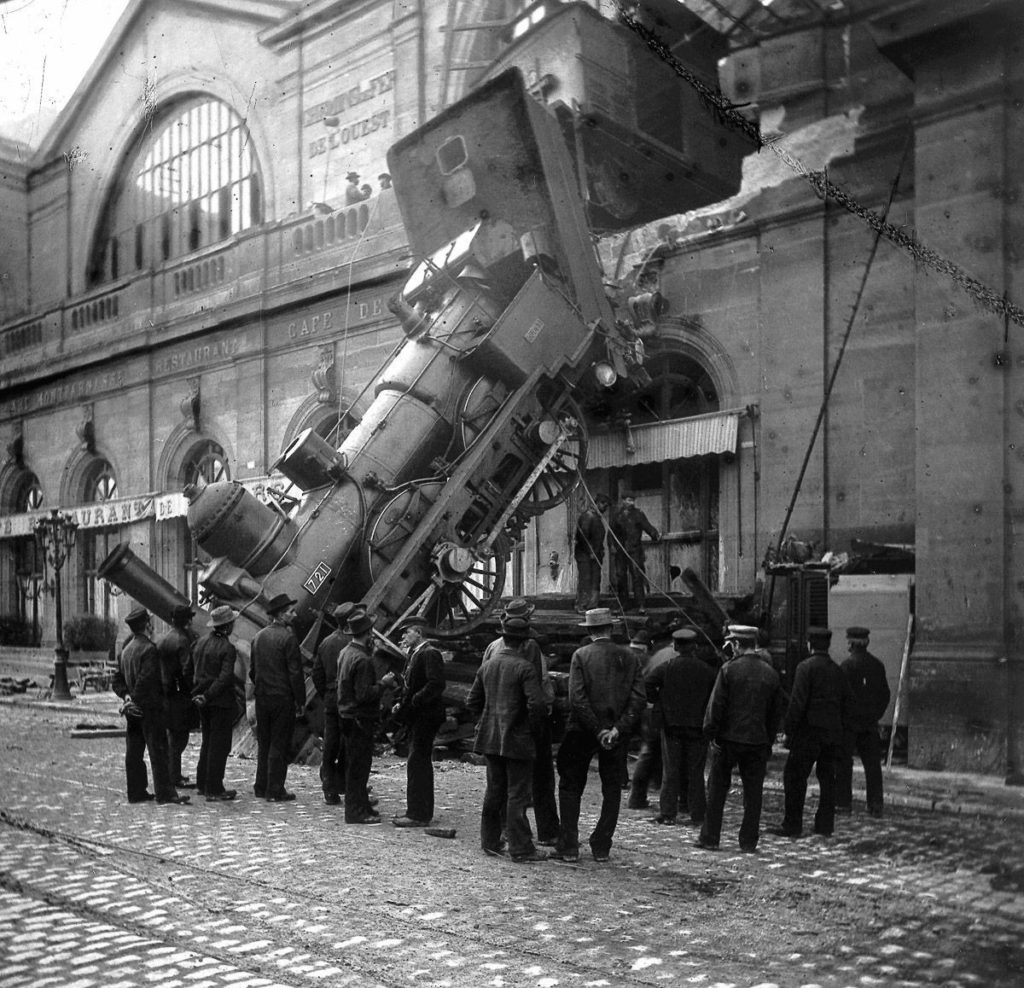
Photo: Wikimedia Commons
Years ago, for instance, I was leaving on a ski vacation with my kids, then little, and my parents, then healthy. For some unaccountable reason, I decided we should take the Métro to the gare where we would catch the fast train to the foot of the Alps.
My father somehow fell behind during our mad dash to the subway as it pulled up to the platform of the Madeleine station. The doors closed with him on the wrong side.
“Get off at Gare Saint-Lazare!” I shouted through the door as we rolled away. He nodded in understanding.
Except that our destination was Gare de Lyon. Saint-Lazare was three stops back in the other direction.
Dad figured that out and met us on the Lyon platform. I will never know why the wrong train station came out of my mouth.
Maybe because there are so MANY Paris train stations. A railfan visitor might arrive from London or Brussels at the Gare du Nord, spend a day in Normandy via the Gare Saint-Lazare, enjoy a stint in Marseille thanks to the Gare de Lyon and then leave for Germany from the Gare de l’Est. And none of them can be considered *the* central station of Paris. The only possible exception is the Gare du Nord, which I’ll write about in a future post.
No wonder tourists get confused. Even my own husband went to the Gare Montparnasse instead of the Gare de Lyon once for a planned trip south and wound up having to fly.
Moreover, the gares – stations — are open to the weather, so can be cold. And often dirty. And with their share of pickpockets. And crowded, especially on the lower levels.
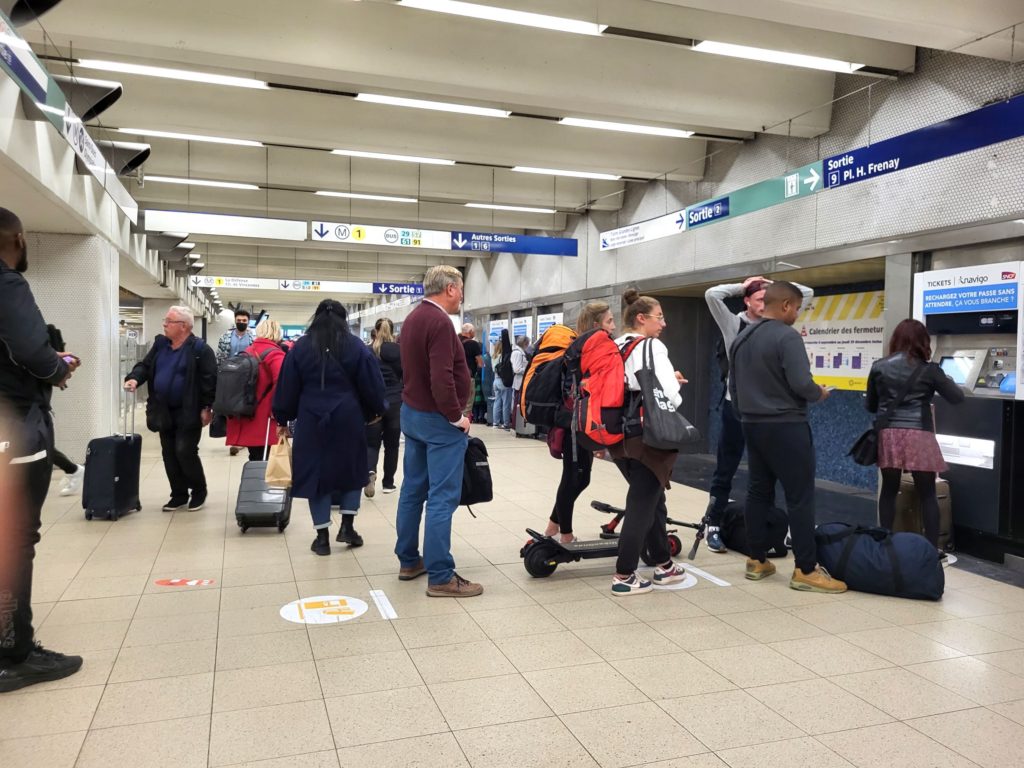
Nonetheless, I recently set out to visit all six of the major stations to see how a much-touted renovation initiative had spruced them up. For perhaps a decade, a subsidiary of the SNCF, the national rail company, has been overhauling nearly every Paris gare. The goal was to have them all bright and shiny for the 2024 Olympics, though it’s already clear that will be only partially met.
The project has certainly provided a facelift. The Gare de l’Est, for instance, used to be a gray, grim station known mainly for having a secret World War II air-raid shelter on the lower level.
Now it is light, airy, and full of boutiques.

Not to mention advertisements.

Similarly, the Gare Saint-Lazare, from where the Impressionist painters traveled to the paintable fields and flowers of Normandy and which is also an enormous commuter network, had rows of stores on three levels.

It wasn’t just snazzy boutiques, either. On the lower level, I came across what appeared to be a competition between two rival sets of avocado sellers. The ones on the left were clearly cheaper.

As I had expected, the Gare Montparnasse proved to be the most commercial and least attractive of all the stations. This is no surprise, given that the 1840 station was torn down in the 1960s and replaced with an unattractive modern structure in the shadow of Paris’s only skyscraper, the Tour Montparnasse. The signs said there were 100 stores and restaurants in the station, and I am hard-pressed to think of a chain that wasn’t represented.
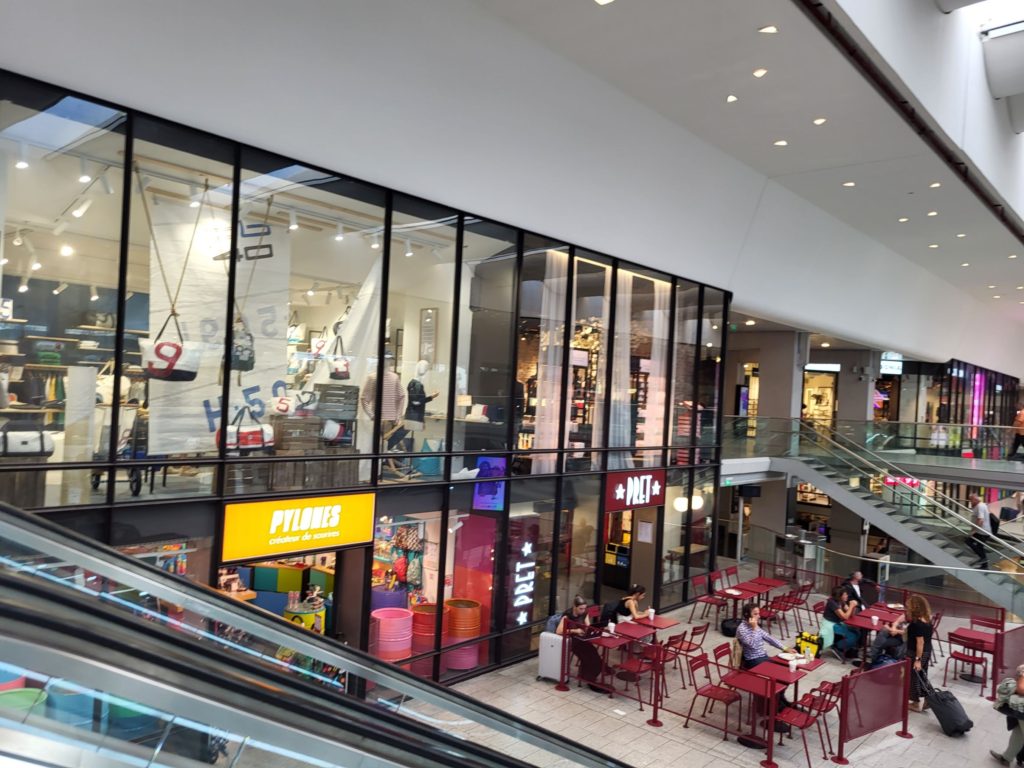
SNCF Gares Et Connexions, which is in charge of all this commerce, says 600 of France’s 3,000 rail stations have stores in them now and 10 million people a day shop in them. Are there really that many people who aren’t late for their trains? It’s not like airports, which cater to a captive group of shoppers who must arrive hours in advance.
Or do visitors come to the station on purpose, sans ticket? Date night at the gare? Hard to imagine, though the toilets, newly spruced up in many stations, might bring in a few users who aren’t going anywhere else. It goes without saying that you can buy snacks, drinks and toiletries at the washrooms too.
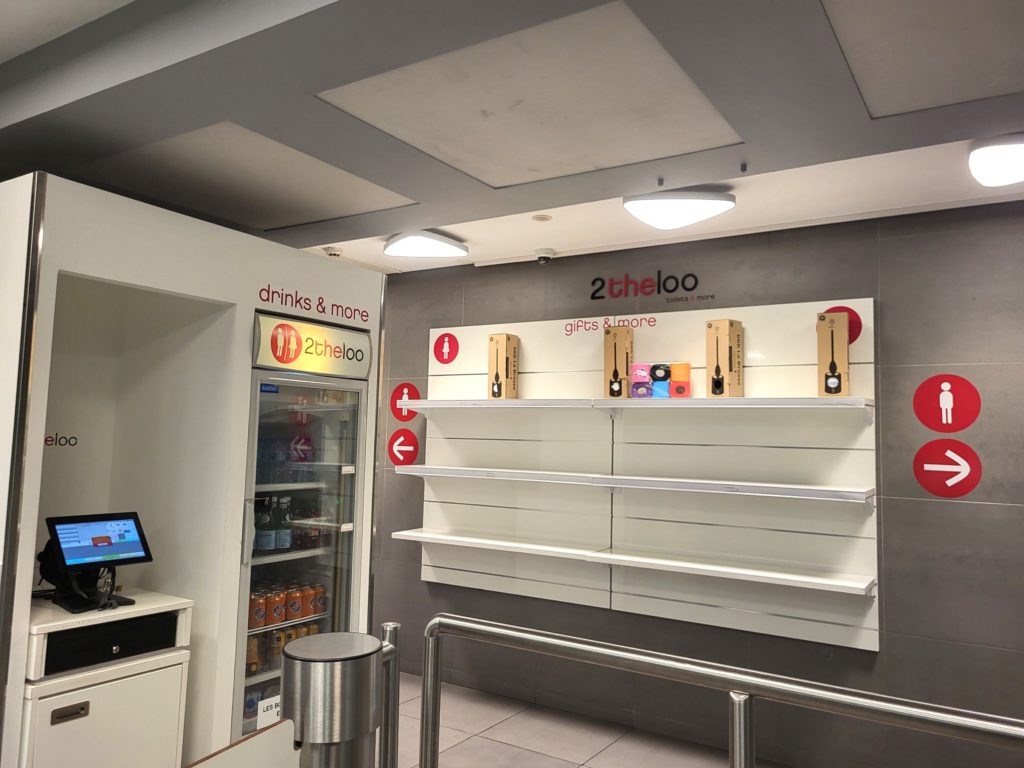
I find the Gare de Lyon to be the most confusing of all Paris stations. Reason: It has two essentially separate departure halls, each with its own track-naming system.
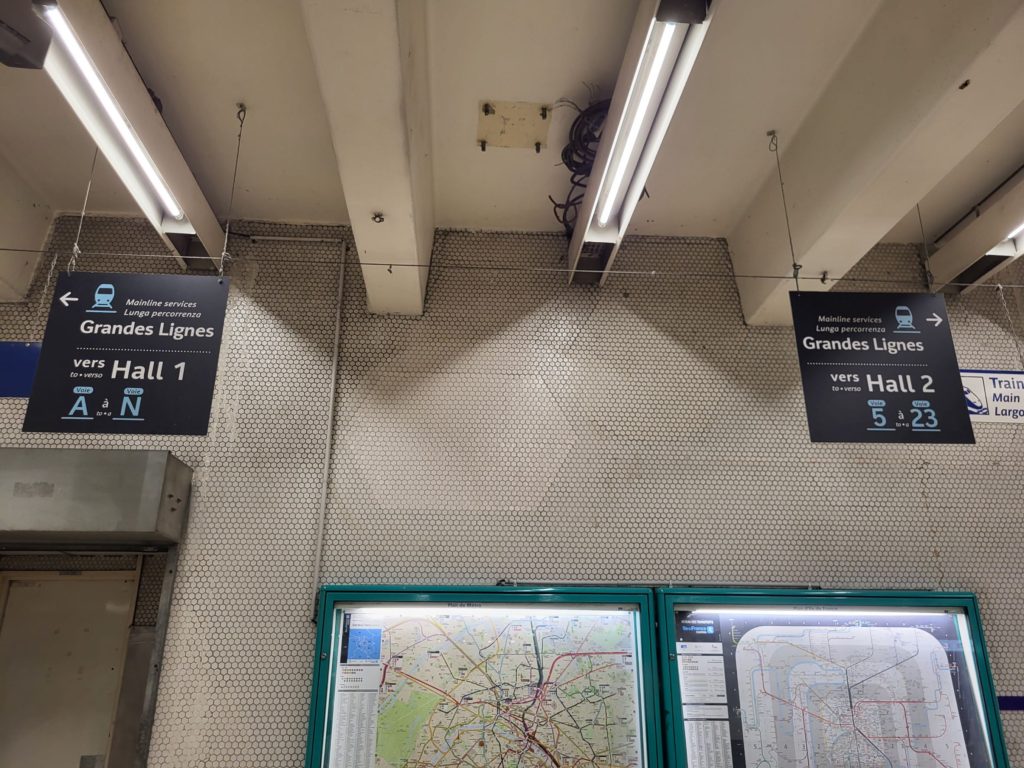
It was undergoing major construction the day I was there, though I did manage to find Le Train Bleu, one of the loveliest restaurants in Paris — and one of the oldest, going back to 1900. A 2014 renovation and the arrival of top chef Michel Rostang has added to both prestige and price tag.

The SNCF has tried to duplicate that success, with mixed results. Eric Fréchon at Lazare is still getting good reviews after opening 10 years ago. However, two-star chef Thierry Marx’s restaurant at the Gare du Nord, the Etoile du Nord, closed in 2019 after only two years, and a promised restaurant under the management of superstar Alain Ducasse, supposed to open at the Gare Montparnasse in early 2019, seems to have been either delayed or canceled.
There was no danger of running into a three-star chef at the last station I visited, the Gare d’Austerlitz. I have never seen a station under such construction.
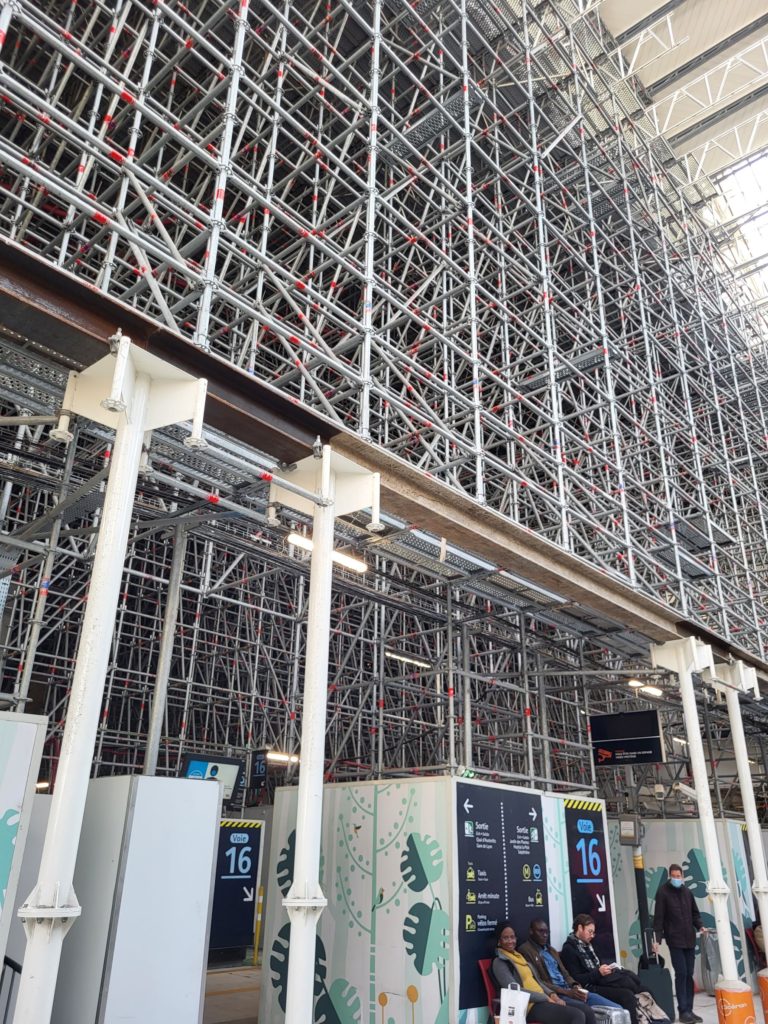
The trains, mostly to the Loire Valley, also could have used a makeover — relooking in French — though Austerlitz has the distinction of being the only Paris station that actually has an elevated Metro line running through it, which is pretty cool.
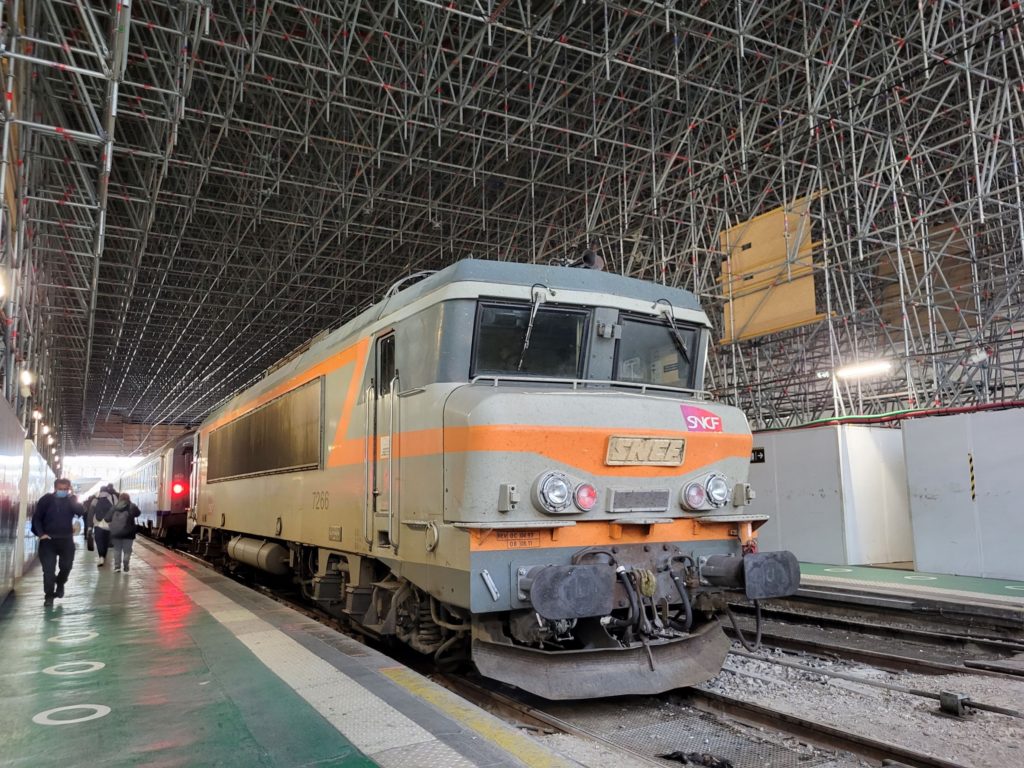
I left vowing not to return until the station had its full complement of new Sephoras, Mangos, Foot Lockers and Starbucks. After all, who goes to a train station just to take the train?
Next Time: The Train Station That Rejects Renovation
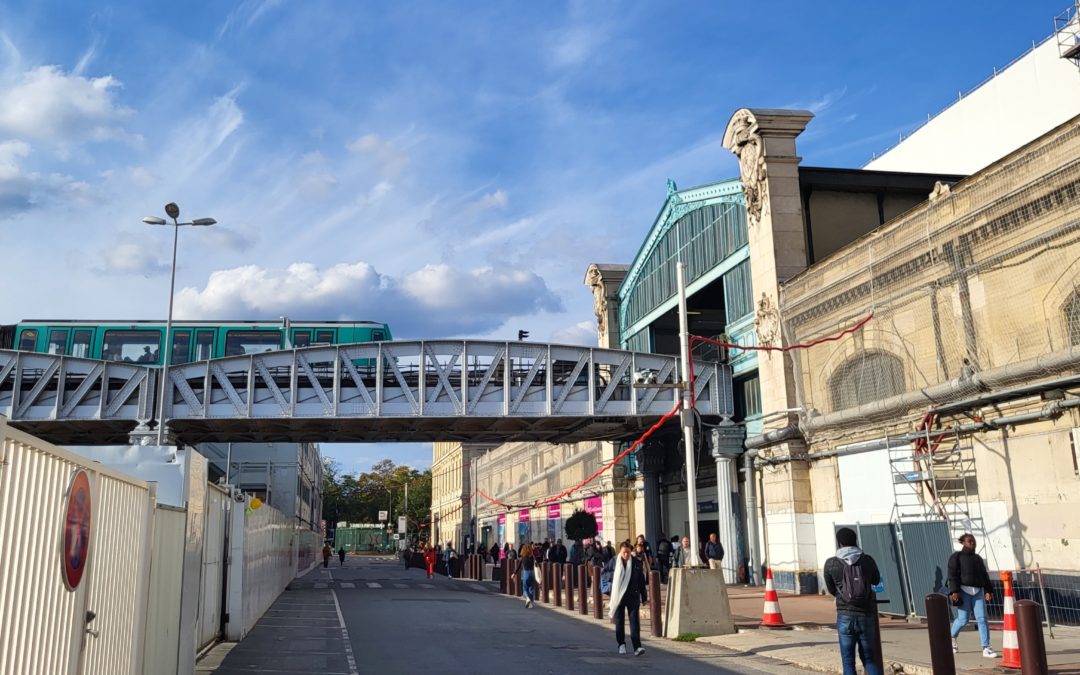
I loved seeing all the stations and reading your commentary. I can’t believe that it’s been 13 years since Sandy and I lived in Paris!
Winky
Thanks, Winky. I can’t believe it either. Come back soon!
Love all of your blogs Ann! A few years ago I arrived at Gare de Lyon from Dijon with a friend and we snagged a table for dinner at Le Train Bleu. A lovely dinner in such an amazing art nouveau space. Lucky you!
Thanks so much, Mary Jane!
Thanks for this trip down memory lane. When I first lived in Paris, the “petite ceinture” was still functioning as well.
And now parts of it are a walking trail! I hope to write about that as well, I’m glad you enjoyed the post.
Hmmm, US airports trending same.
Indeed! Though as noted in post, airports have a captive audience of people who have to be there away ahead of time.